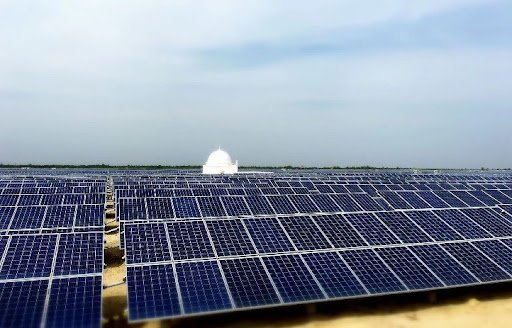The world is experiencing an important shift toward green energy which is led by solar power. energy revolution. While countries are striving to cut their carbon footprint, demand for solar panels have increased. This article examines the complexities of production for solar panels in the world by highlighting the key actors, innovative technologies, as well as the future of solar panel production.
1. The Rise of Solar Energy
1.1. The Need for Renewable Energy
As climate change becomes an ever-growing concern countries are looking for alternatives to energy that are sustainable. Solar energy is plentiful and safe, is gaining popularity as an alternative to fossil energy sources.
1.2. Benefits of Solar Power
Solar energy comes with numerous advantages such as lower electric bills in addition to energy independence as well as the reduction of carbon dioxide emission. This has prompted nations to make huge investments in solar energy technology.
2. Leading Countries in Solar Panel Production

2.1. China: The Unstoppable Force
China is the top producer of solar panels worldwide with more than 70 percent of globe’s production total. Companies like JinkoSolar, Trina Solar, and Longi Green Energy dominate the market.
2.1.1. Government Support and Incentives
The Chinese government has implemented a number of robust policies as well as subsidies to boost the adoption of solar power. This has led to an boost in manufacturing capacity as well as lower cost of production.
2.2. The United States: A Growing Market
The U.S. ranks second in the production of solar panels With companies like First Solar and SunPower leading in the field. It has made major progress in extending its solar-powered infrastructure.
2.2.1. Federal and State Initiatives
Numerous state and federal incentives, such as grants and tax credits, has aided the expansion of the solar market. But, issues such as tariffs on trade are affecting the market.
2.3. Germany: Pioneering Solar Technology
Germany is among the first to embrace solar energy. It is still a pioneer in the field of solar technology development. It has a firm dedication to renewable energy which is backed through its Energiewende policy.
2.3.1. Research and Development
German firms are renowned for the high-quality solar panels as well as cutting-edge research. A focus on sustainability and efficiency has established Germany as the center of solar-powered technology.
2.4. Japan: Innovation and Adaptation
Japan is another major manufacturer of solar panels and has a particular focus on technological innovation and innovation. The companies such as Sharp as well as Kyocera are well-known for their efficient panels.
2.4.1. Overcoming Natural Disasters
Japan’s efforts in enhancing solar power are motivated by the necessity of secure energy supply following catastrophes such as the Fukushima nuclear accident.
3. Emerging Players in the Solar Market
3.1. India: A Solar Giant in the Making
India has plans that are ambitious to boost its solar energy capacity. It is aiming to reach 100 GW in 2022. India is investing heavily into manufacturing in its domestic sector to lessen the dependence on imports.
3.1.1. Policy Framework
The Indian government has made policies such as that of the Solar Park Scheme to attract investors and loated tea recipe facilitate the development of the development of large-scale solar farms.
3.2. South Korea: Technological Advancements
South Korea is making strides in the production of solar panels by focusing on technology and research. Businesses like LG as well as Hanwha Q CELLS are at the top of the line.
4. Challenges Facing Solar Panel Production
4.1. Supply Chain Issues
The solar panel business does not come without difficulties. In particular, disruptions to supply chain processes in times of global crisis has affected the production rate as well as the availability of raw materials.
4.2. Environmental Concerns
Although solar energy is thought to be clean, its production procedure involves components that could cause environmental harm. The need to tackle these issues is vital to assure sustainable development.
5. Future Trends in Solar Panel Production
5.1. Innovations in Solar Technology
Solar panel manufacturing will likely bring advancements in the field of technology, such as the bifacial panel and perovskite solar cells, that are promising more efficiency and less expense.
5.2. Increasing Global Demand
In the wake of countries committing to renewable energy goals The need for solar panels is expected to remain on the rise. The shift in demand is likely to result in further investment in the production capacity as well as technologies.
Conclusion
The solar landscape in the world panel production is constantly changing. Although countries such as China and China, U.S., and Germany have led the way, other emerging markets such as India as well as South Korea are poised to contribute significantly. Through continuous innovation and an overall dedication to sustainable development The prospects for solar energy are promising.
FAQs
1. What makes solar energy as a green solution?
Solar energy is abundant and renewable and produces little or any greenhouse gases in its operation. This makes an environmentally sustainable option to fossil energy sources.
2. Which country has the most solar panels?
China is the biggest producer of solar panels. They account for more than 70% of all solar panels produced worldwide.
3. What are the advantages of solar panels for homeowners?
Solar panels are a great way to reduce the cost of electricity, boost energy independence, and can add value to houses.
4. How can government policies affect solar panel manufacturing?
Incentives and policies from the government can encourage investment in solar energy and make it affordable and more accessible to both businesses and consumers.
5. What advances are anticipated for the field of solar technology?
The future may bring higher efficient panels, better energy storage options, as well as new materials such as perovskite which may revolutionize the market.




